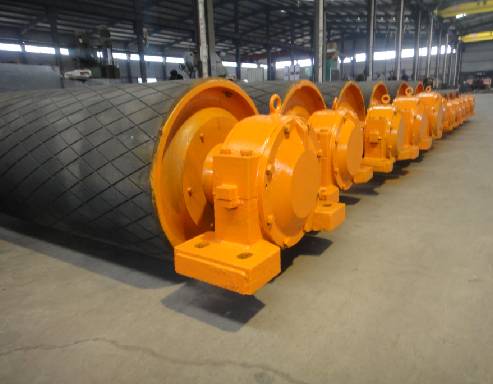 Afrikaans
Afrikaans  Albanian
Albanian  Amharic
Amharic  Arabic
Arabic  Armenian
Armenian  Azerbaijani
Azerbaijani  Basque
Basque  Belarusian
Belarusian  Bengali
Bengali  Bosnian
Bosnian  Bulgarian
Bulgarian  Catalan
Catalan  Cebuano
Cebuano  Corsican
Corsican  Croatian
Croatian  Czech
Czech  Danish
Danish  Dutch
Dutch  English
English  Esperanto
Esperanto  Estonian
Estonian  Finnish
Finnish  French
French  Frisian
Frisian  Galician
Galician  Georgian
Georgian  German
German  Greek
Greek  Gujarati
Gujarati  Haitian Creole
Haitian Creole  hausa
hausa  hawaiian
hawaiian  Hebrew
Hebrew  Hindi
Hindi  Miao
Miao  Hungarian
Hungarian  Icelandic
Icelandic  igbo
igbo  Indonesian
Indonesian  irish
irish  Italian
Italian  Japanese
Japanese  Javanese
Javanese  Kannada
Kannada  kazakh
kazakh  Khmer
Khmer  Rwandese
Rwandese  Korean
Korean  Kurdish
Kurdish  Kyrgyz
Kyrgyz  Lao
Lao  Latin
Latin  Latvian
Latvian  Lithuanian
Lithuanian  Luxembourgish
Luxembourgish  Macedonian
Macedonian  Malgashi
Malgashi  Malay
Malay  Malayalam
Malayalam  Maltese
Maltese  Maori
Maori  Marathi
Marathi  Mongolian
Mongolian  Myanmar
Myanmar  Nepali
Nepali  Norwegian
Norwegian  Norwegian
Norwegian  Occitan
Occitan  Pashto
Pashto  Persian
Persian  Polish
Polish  Portuguese
Portuguese  Punjabi
Punjabi  Romanian
Romanian  Russian
Russian  Samoan
Samoan  Scottish Gaelic
Scottish Gaelic  Serbian
Serbian  Sesotho
Sesotho  Shona
Shona  Sindhi
Sindhi  Sinhala
Sinhala  Slovak
Slovak  Slovenian
Slovenian  Somali
Somali  Spanish
Spanish  Sundanese
Sundanese  Swahili
Swahili  Swedish
Swedish  Tagalog
Tagalog  Tajik
Tajik  Tamil
Tamil  Tatar
Tatar  Telugu
Telugu  Thai
Thai  Turkish
Turkish  Turkmen
Turkmen  Ukrainian
Ukrainian  Urdu
Urdu  Uighur
Uighur  Uzbek
Uzbek  Vietnamese
Vietnamese  Welsh
Welsh  Bantu
Bantu  Yiddish
Yiddish  Yoruba
Yoruba  Zulu
Zulu Understanding the Functionality of Return Pulleys in Mechanical Systems
Understanding the Return Pulley Function, Applications, and Benefits
In the realm of mechanical engineering and machinery, the concepts of pulleys play a crucial role in enhancing efficiency and functionality. Among the various types of pulleys, the return pulley stands out as a significant component used in a variety of applications. This article aims to delve into the definition, function, applications, and benefits of return pulleys.
What is a Return Pulley?
A return pulley is a type of pulley that redirects the force of a cable or belt back to its original direction, creating a closed-loop system. Typically used in conjunction with other pulleys, return pulleys are integral to systems where continuous movement is essential. They are designed to reduce friction and wear, ensuring a smoother and more efficient operation. In many scenarios, return pulleys are used in conjunction with motors to lift, lower, or move heavy objects.
How Does It Work?
The operation of a return pulley is based on the principles of mechanical advantage. When a force is applied to one end of a cable looped around the return pulley, the pulley redirects the force, thereby allowing the cable to exert an equal force on another object at the opposite end. This system minimizes the amount of force required to lift or maneuver heavy loads by distributing weight effectively and utilizing gravity.
The return pulley typically features a grooved wheel, which provides a channel for the cable or belt to run smoothly. The design of the grooved wheel ensures that the cable does not slip off during operation. Consequently, this results in improved efficiency and safety when lifting heavy objects or transporting goods.
Applications of Return Pulleys
Return pulleys find applications in various industries due to their versatility and efficiency. Here are some common uses
1. Construction and Heavy Machinery In construction sites, return pulleys are often employed in cranes and hoisting systems. They play a vital role in lifting and lowering loads, ensuring that heavy materials can be safely transported to different heights.
2. Elevators and Aerial Lifts Return pulleys are essential in elevator systems, where they help redirect cables attached to the elevator car. This allows for a smooth and controlled movement between floors, enhancing both safety and user experience.
return pulley

3. Automotive Industry In vehicles, return pulleys are used in various systems, including timing belts and serpentine belts. They help in routing power from the engine to different components, contributing to overall vehicle performance.
4. Manufacturing and Conveyor Systems In manufacturing plants, return pulleys are integral to conveyor systems, allowing for the efficient movement of materials along a production line. They help in directing the movement of belts, ensuring uninterrupted flow and reducing downtime.
5. Theatrical Rigging In the entertainment industry, return pulleys are used in stage rigging to facilitate the movement of curtains, props, and lighting equipment. Their ability to handle significant loads while maintaining precision makes them ideal for live performances.
Benefits of Using Return Pulleys
The incorporation of return pulleys into various systems offers numerous advantages, including
- Increased Efficiency By minimizing friction and wear, return pulleys enable smoother operation and reduce the energy required to move loads. This leads to an overall increase in system efficiency.
- Safety Improvements Return pulleys ensure that cables stay securely in place, reducing the risk of accidents caused by slipping or entangled cables. This enhances the safety of workers and machinery.
- Cost-Effective Solutions The use of return pulleys can reduce maintenance costs by decreasing wear and tear on components. This longevity often translates into lower operational costs in the long run.
- Versatility With their ability to adapt to various applications and industries, return pulleys are a versatile solution for many mechanical challenges.
Conclusion
The return pulley is an essential component in many mechanical systems, contributing to their efficiency, safety, and performance. As technology advances, the design and applications of return pulleys continue to evolve, making them indispensable in various fields, from construction to manufacturing. Understanding the function and benefits of return pulleys not only highlights their importance but also emphasizes the continuous innovation within the mechanical engineering sector.
-
Revolutionizing Conveyor Reliability with Advanced Rubber Lagging PulleysNewsJul.22,2025
-
Powering Precision and Durability with Expert Manufacturers of Conveyor ComponentsNewsJul.22,2025
-
Optimizing Conveyor Systems with Advanced Conveyor AccessoriesNewsJul.22,2025
-
Maximize Conveyor Efficiency with Quality Conveyor Idler PulleysNewsJul.22,2025
-
Future-Proof Your Conveyor System with High-Performance Polyurethane RollerNewsJul.22,2025
-
Driving Efficiency Forward with Quality Idlers and RollersNewsJul.22,2025





























